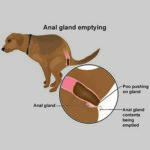Why Is My Dogs Leg Twitching
Why Is My Dog’s Leg Twitching? Understanding Canine Tremors and Shaking
If you have a dog, you may have noticed that sometimes your furry friend’s leg twitches or shakes involuntarily. While occasional tremors or spasms can be normal for dogs, especially during sleep or after exercise, if the twitching persists or becomes more frequent, it may indicate an underlying health issue. In this article, we will explore some possible reasons why your dog’s leg is twitching and what you can do to help them feel better.
What are canine tremors?
Tremors are rhythmic and involuntary movements of muscles that can affect different parts of the body, including the legs, head, neck, or trunk. In dogs, tremors may appear as shaking, quivering, or shivering of one or more limbs. Tremors can be classified into different types based on their frequency, duration, and triggers. Some common types of canine tremors include:
– Physiological tremors: These are normal tremors that occur in response to stress, excitement, fear, cold temperature, low blood sugar levels, or physical exertion. They usually involve all four legs and stop when the dog calms down or warms up.
– Intention tremors: These are tremors that occur when the dog tries to perform a voluntary movement, such as reaching for a toy or food bowl. They may indicate a neurological disorder.
– Orthostatic tremors: These are tremors that occur when the dog stands still but go away when they move or sit down. They may be related to muscle weakness or fatigue.
– Idiopathic tremors: These are tremors that have no known cause and are often genetic in origin. They can affect young dogs and persist throughout their life without causing any harm.
What are the possible causes of leg twitching in dogs?
Leg twitching in dogs can have various causes, ranging from benign to serious. Some of the most common reasons why your dog’s leg may be twitching include:
– Muscle cramps or spasms: These are involuntary contractions of muscles that can cause pain, discomfort, and twitching. They may result from overuse, dehydration, electrolyte imbalance, or injury.
– Tick bites: These are bites from ticks that transmit infectious agents such as Lyme disease, ehrlichiosis, or anaplasmosis. These diseases can cause fever, lethargy, joint pain, and muscle tremors.
– Poisoning: This is the ingestion or exposure to toxic substances such as pesticides, rat poison, chocolate, or medication overdose. Poisoning can affect different organs and systems and lead to seizures, tremors, and other symptoms.
– Neurological disorders: These are disorders that affect the nervous system and can cause abnormal movements such as tremors, seizures, or weakness. Some neurological disorders that may cause leg twitching in dogs include epilepsy, degenerative myelopathy, spinal cord injury, or brain tumor.
– Pain: This is a sensation that can trigger reflexive movements such as twitching. If your dog has an underlying condition that causes pain in their leg or elsewhere in their body, they may exhibit leg twitching as a response to the discomfort.
How can I help my dog with leg twitching?
If you notice that your dog’s leg is twitching more than usual or seems to be painful or affecting their mobility, it’s best to consult with your veterinarian. Your vet can perform a physical exam and run diagnostic tests such as blood work, radiography, ultrasound, or electrodiagnostics to determine the underlying cause of the leg twitching. Depending on the diagnosis, your vet may recommend different treatments such as:
– Medication: This includes anti-inflammatory drugs for pain relief; anticonvulsants for seizure control; or antibiotics for infection treatment.
– Rehabilitation: This includes physical therapy, massage, and exercise to improve muscle strength, flexibility, and coordination.
– Surgery: This may be necessary in cases of injury, tumor removal, or spinal cord decompression.
– Management: This includes avoiding triggers that cause physiological tremors (such as loud noises or extreme temperatures); preventing tick infestations by using tick preventatives; keeping toxic substances away from your dog’s reach; and providing a comfortable and safe environment for your dog to rest.
In conclusion, leg twitching in dogs can be a sign of various underlying conditions that require prompt veterinary attention. By understanding the different types of canine tremors and their possible causes, you can better recognize when your dog needs medical help. Remember to always consult with your vet if you have any concerns about your dog’s health and wellbeing. And don’t worry too much if your dog’s leg twitches occasionally – they may just be dreaming of chasing squirrels!



